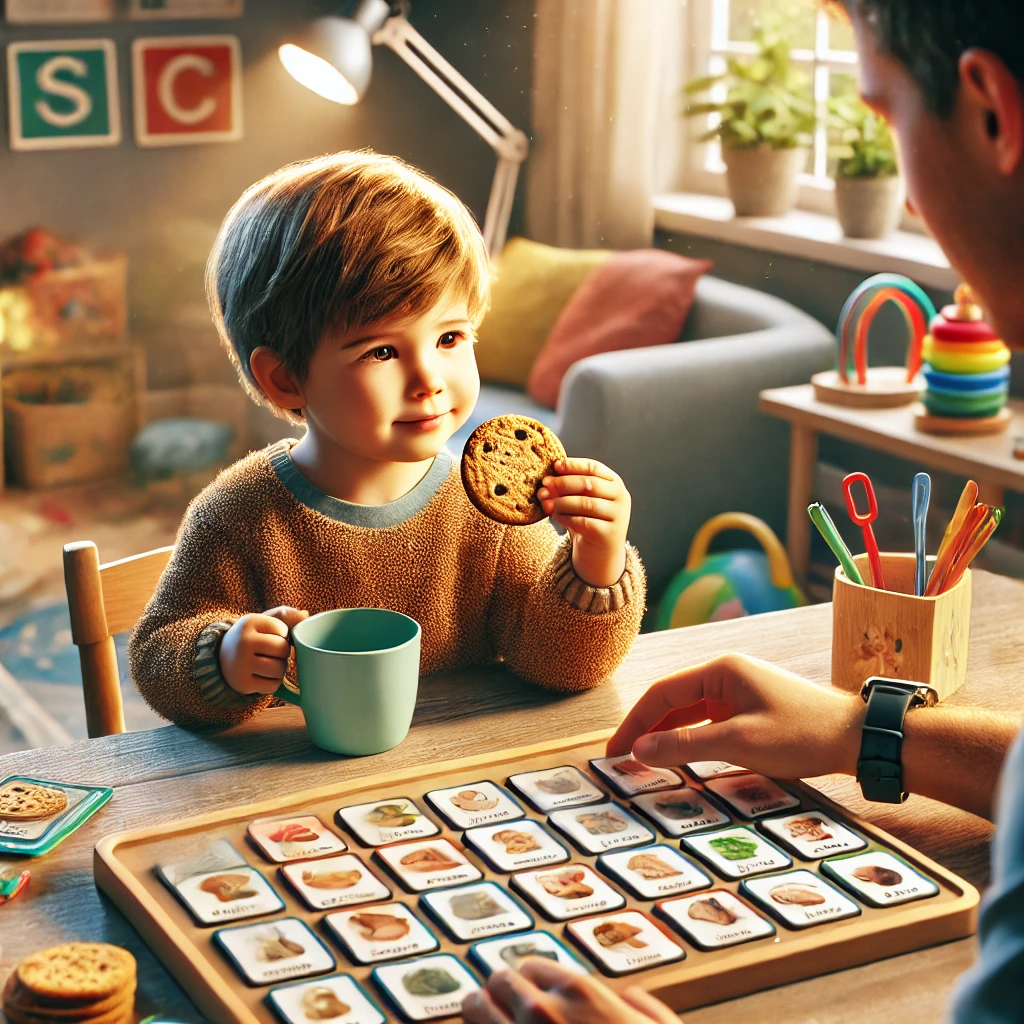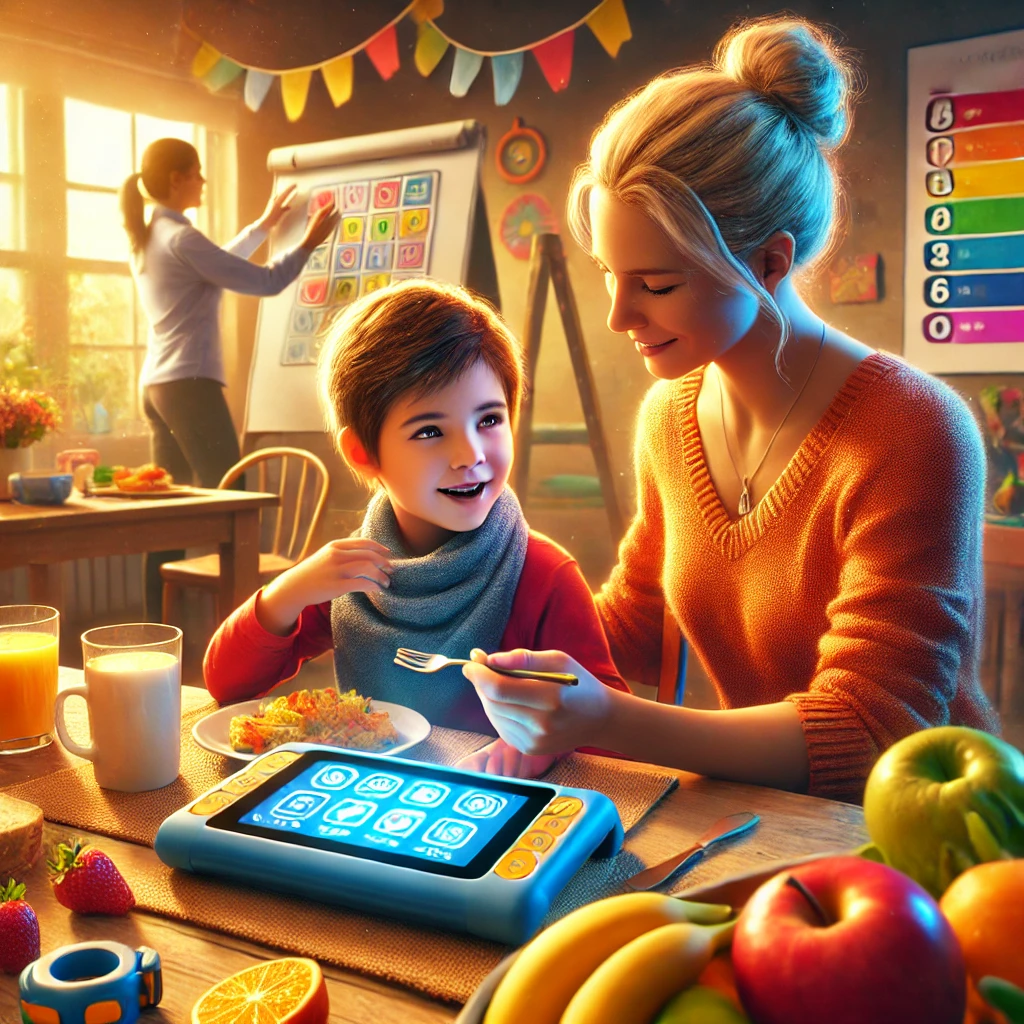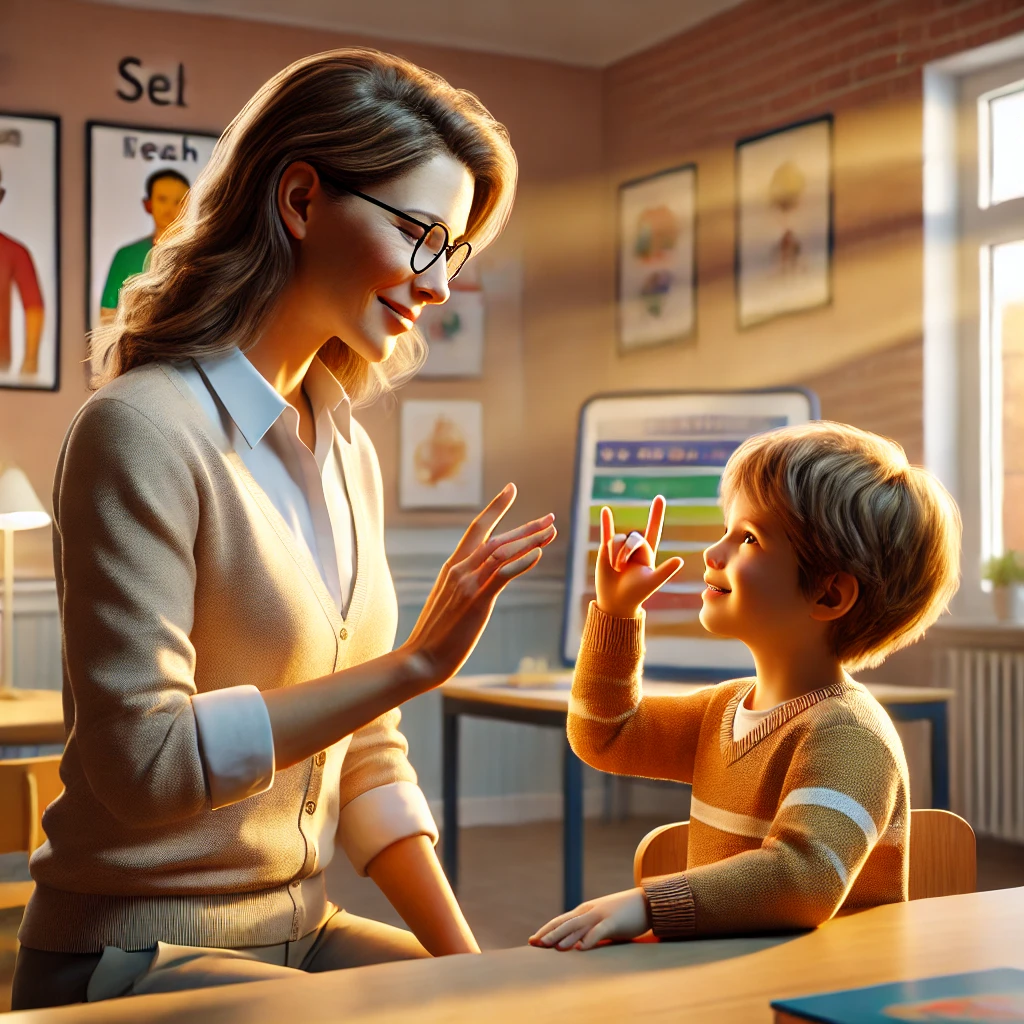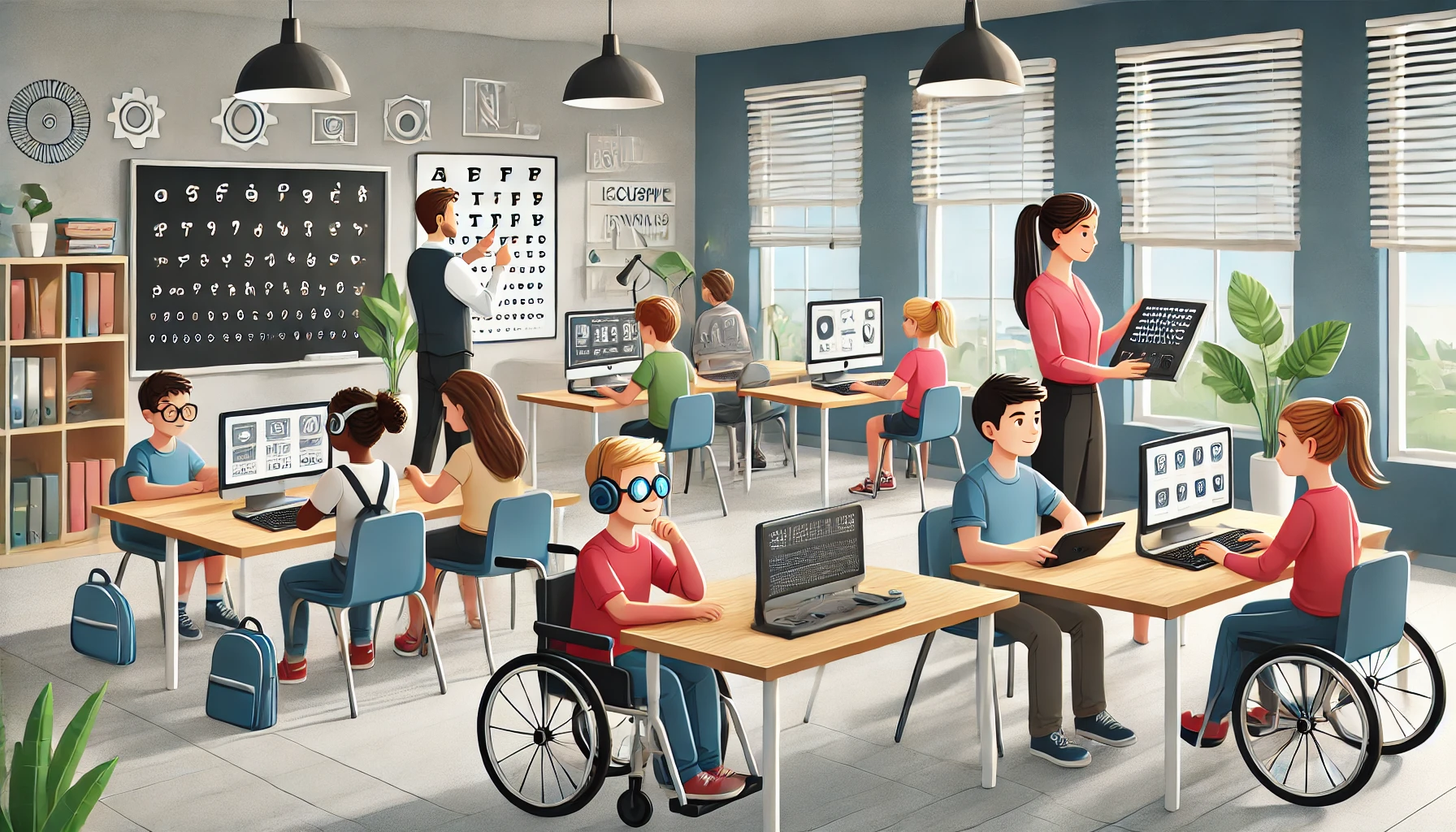Understanding Non-Verbal Communication
When it comes to kiddos with special needs, how we interact with ’em can make a world of difference. For those who don’t speak much or at all, it’s even more crucial. Recognizing what makes communication tick for these children means we’re stepping up to meet their needs and help them grow into their own marvelous selves.
The Importance of Communication for Non-Verbal Children
Chatting, sharing secrets, or even a simple nod or wave – communication is all about connecting, venting emotions, and learning. Now, if you’re thinking about non-verbal kids, well, it’s a different ballgame. They might not chime in with words, but boy, do they have a lot to say! Finding ways for them to express more than just what they need – and to actively mingle and make friends – that’s what it’s all about. When we truly see how crucial this is, we start embracing how these children communicate. It’s the beginning of understanding them on their terms.
Challenges Faced by Non-Verbal Children
These little ones run into a smorgasbord of hurdles. Imagine trying to show you’re hungry or tired without words, or the frustration that boils over from those unshared thoughts. It can make ’em feel like an outsider in a world buzzing with chatter. Our job is to tackle these challenges with a soft heart, a bucket load of patience, and all the special help we can offer. When we do this, we’re giving them the best shot to be all they can be.
Exploring Alternative Communication Methods
In supporting these children, it’s like having a toolbox of ways to help them be heard and to join in the fun. Think picture cards, AAC gadgets, signing, or even using their senses to send their message across. It’s all about breaking down barriers so they can interact with buddies and let everyone know how they feel. Working out what clicks for each child is a team effort, where we stay creative and open-minded. It’s a journey of trial and a whole lot of caring.
Diving into this world of alternative speaking methods? It’s like finding secret pathways to connect, understand, and celebrate every child’s gifts. By sticking with it, with lots of love and a bit of tenacity, we can build a supportive world where non-verbal kids blossom beautifully, each in their own wonderful way.
Visual Supports
Helping non-verbal kiddos find their voice (even if they’re not using their vocal cords) can be a real game-changer. Visual aids are like magic wands for bridging communication gaps. Two tools that folks often swear by are the Picture Exchange Communication System (PECS) and visual schedules. Let’s break them down.
Using Picture Exchange Communication System (PECS)

PECS is like teaching the art of swapping pictures for words, and it’s a pretty nifty trick if you ask me. Imagine a kiddo handing over a picture of a cookie instead of just staring hungrily. Each image represents something they want or need, be it a toy, a cookie, or even a trip to the park. It’s like building a bridge from their mind to the outside world.
Here’s how it works: Get the right pictures, set up a routine, and watch the little communicator transform over time. It’s like the more they practice, the more they learn to share their thoughts and feelings. Plus, they can carry these picture cards anywhere, so communication can happen anytime, anywhere!
Implementing Visual Schedules
Now onto visual schedules, which are kind of like a day planner—picture-style. Think of them as a way to spell out the day’s events in a way non-verbal kids really get. It’s not just about knowing what comes next; it’s about making the whole day feel less like a surprise pop quiz.
Placing these schedules in a visible spot gives kids a heads-up about what’s coming, like a friendly neighborhood forecast minus the weather guy. It can ease them into task transitions, helping them prep for what’s next and maybe even giving them a bit of “I got this” independence. These schedules aren’t one-size-fits-all—you can tweak ‘em to fit each child’s world.
PECS and visual schedules are more than just handy tools; they’re gateways to independence and self-expression for non-verbal kids. Slip these into daily routines and suddenly, communication barriers feel a lot less towering. When caregivers and educators bring these into play, they’re creating a world where everyone has a chance to be heard and involved in the fun stuff of life.
Augmentative and Alternative Communication (AAC)
Helping non-verbal kids find their voice can be a heartwarming journey. Augmentative and Alternative Communication, or AAC, is all about giving folks who struggle with speech and language a way to chat effortlessly.
Introduction to AAC Devices

So what are these AAC gadgets? Think of them as these nifty tools and tech that help folks express their thoughts, needs, and feelin’s. It’s like a communication magic trick for kiddos who can’t quite find the words. You can pick from a buffet of goodies like dedicated communication gizmos, tablets with special apps, picture boards, or even good ol’ communication books. These bad boys let kiddos express themselves through symbols, pics, text, and sometimes even produce speech, so they can chat with friends, family, and anyone else on the playground of life.
Now, picking the right gizmo is like shopping for the perfect pair of shoes. You need to think about your little one’s smarts, how their hands dance, and how they want to express themselves. Don’t fly solo though; grab a speech-language pathologist or an AAC whiz to join the shopping expedition. They’ll help you grab the perfect fit and set up a personalized game plan.
Incorporating AAC Systems in Daily Activities

AAC systems should be part of the routine, like brushing teeth or gobbling breakfast. Using these tools in places like home, school, or therapy sessions turns practice into a daily thing, helping those language muscles grow strong.
A cheerleading squad—comprising caregivers, teachers, and therapists—backing continuous use of AAC devices transforms the everyday grind into a thriving garden of vocabulary growth and confident expressions. When everyone pitches in to support AAC use, kids can practice striking up conversations, sharing their pizza slices, and bonding with everyone from strangers to Santa.
With AAC gear getting the star treatment in daily life, non-verbal kids can bulldoze communication hurdles and embrace more learning and social kicks. Giving relentless support and plenty of “you got this!” vibes mean these kiddos can live life loud and proud—even if they’re not using words in the usual way.
Sign Language and Gestures
Ever thought of spicing up communication for non-verbal kiddos? Well, introducing sign language and gestures can do wonders for interaction and understanding.
Benefits of Teaching Sign Language
Diving into sign language with non-verbal children is like opening a treasure chest of communication. Why? Because it gives them a visual way to chat when words just won’t flow. Teaching sign language lets kiddos show what they want, feel, or think in a way that gets others involved and opens up all kinds of cool opportunities.
Studies back it up: sign language can boost their chatting skills, get them more social, and amp up their confidence levels. It’s like giving them a superpower to calm frustration and keep behavior woes at bay. Plus, it’s like a secret handshake with language—it builds up those language skills, stacking up words, grammar, and all that jazz, which comes in handy when they’re ready for verbal speak. Need more tricks up your sleeve? Check our chat about language development games for special needs children.

Effective Use of Gestures for Communication
Not just sign language—gestures have their own magic, too. Think of nods, waves, and pointing as middle-ground helpers. Even without formal sign language, gestures step up to say, “Yo, I need this,” and zap those barriers down.
Encouraging this vibe, caregivers and educators set the stage for non-verbal kids to bloom in conversations, sharing feelings and joining daily escapades with flair. Using gestures matched with spoken words or visual prompters kicks communication skills into high gear and nudges independence along. Show them the ropes and let those gestures rock in different situations, making the kids feel like champs. Want some lively activities? Check out our piece on fun speech therapy activities to do at home.
Weaving sign language and gestures into the mix? It sets up a world where non-verbal kids have the tools to break out, connect, and shine in their unique ways. So, get ready to nurture communication, make new friends, and see those vibrant expressions come alive.
Sensory-Based Communication Strategies
Living in a world filled with chatter isn’t easy for non-verbal kids. But like magicians pulling rabbits from hats, understanding their sensory experiences can work wonders for connection without saying a single word.
Understanding Sensory Needs
Some kids tune into their surroundings like they’re at a rock concert, feeling every beat and vibration. Others might tiptoe through the noise, preferring the calm hum of quiet whispers. Knowing this magical side of our children helps craft communication that speaks volumes without speech.
| Sensory Need | Characteristics |
|---|---|
| Visual | Bright colors and cues are like their guiding stars |
| Auditory | Sound can be a friend or foe, with quiet spaces being a refuge |
| Tactile | They may love (or shy away from) textures and touchy-feely stuff |
| Olfactory | Smells can swoon or swoosh them away—think comfort scents or too-intense aromas |
| Gustatory | Flavors and textures are either a delight or a challenge |
Tuning in to these sensory quirks helps set the stage for a world where communication doesn’t just take root, it blooms.
Utilizing Sensory Tools for Communication
Break out the sensory tools, my friends—these are much more than your garden-variety gadgets. They’re bridges to unseen worlds, helping children express themselves in vibrant, tactile ways.
| Sensory Tool | Description | Application |
|---|---|---|
| Visual Schedules | Picture guides that map out daily adventures | Ground kids in routine, making each new day feel less like a maze and more like a treasure hunt |
| Tactile Boards | Boards with nubby, bubbly, scratchy elements | Let kids roam free tactically, offering hands-on choices they can feel more than see |
| Picture Cards | Little visual prompts about life and emotions | Give voice to thoughts and feelings through images that speak with a look |
| Sensory Stories | Tales with a sensory flair | Stories you can smell, see, and feel, making narratives come alive with every turn of the page |
Rolling out these sensory superheroes in everyday life brings excitement into communication, inviting kids to explore freely.
Personal journeys in this sensory treasure trove can transform communication hurdles into stepping stones, pulling back the curtain on hidden talents and preferences. With the right sensory toolkit, nurturing development becomes an adventure—rich, inclusive, and full of life’s best surprises.
Collaborating for Success
Helping non-verbal kiddos discover fresh ways to chat is a team effort that means rallying a strong group to support them and getting chummy with therapists and teachers.
Building a Support Network

Being a parent or caregiver to a non-verbal child means you’re on a bit of an adventure. And just like any good journey, it’s made better with a trusty crew. Family, friends, local and online support groups—all these folks can be the wind beneath your wings. They’ve likely faced the same rocky paths and can share tips and little tricks of the trade.
You’ll find that swapping stories and experiences with others brings a sense of “you’re not alone” when things get tough. Hearing how others have tackled similar challenges can be the lightbulb moment you need to navigate your child’s communication journey with confidence and heart.
Working with Therapists and Educators
Therapists and educators? They’re like wizards with magic wands! They bring their skills to the table and help carve out just the right path for your child’s communication needs. Speech therapists, occupational therapists, assistive tech whizzes—they roll up their sleeves and dig into what makes your kid tick.
They’ll work with you to craft a game plan that suits your little one’s needs and quirks. Teachers can help sprinkle some of that communication magic into classroom settings, making sure your kid gets the support they need both at home and in school.
The more you gel with these experts, the better the plan you’ll build to help your child flourish. When everyone’s on the same page, you can trade success stories, brainstorm solutions, and tackle any bumps in the road together. This teamwork can really boost your child’s communication chops and help them live their best life.
By weaving together a network of supporters and teaming up with savvy pros, you’re laying down the stepping stones to help your non-verbal child shine. Through collaboration and a willingness to ask for a hand when needed, you can approach this complex journey with empathy and zest.






